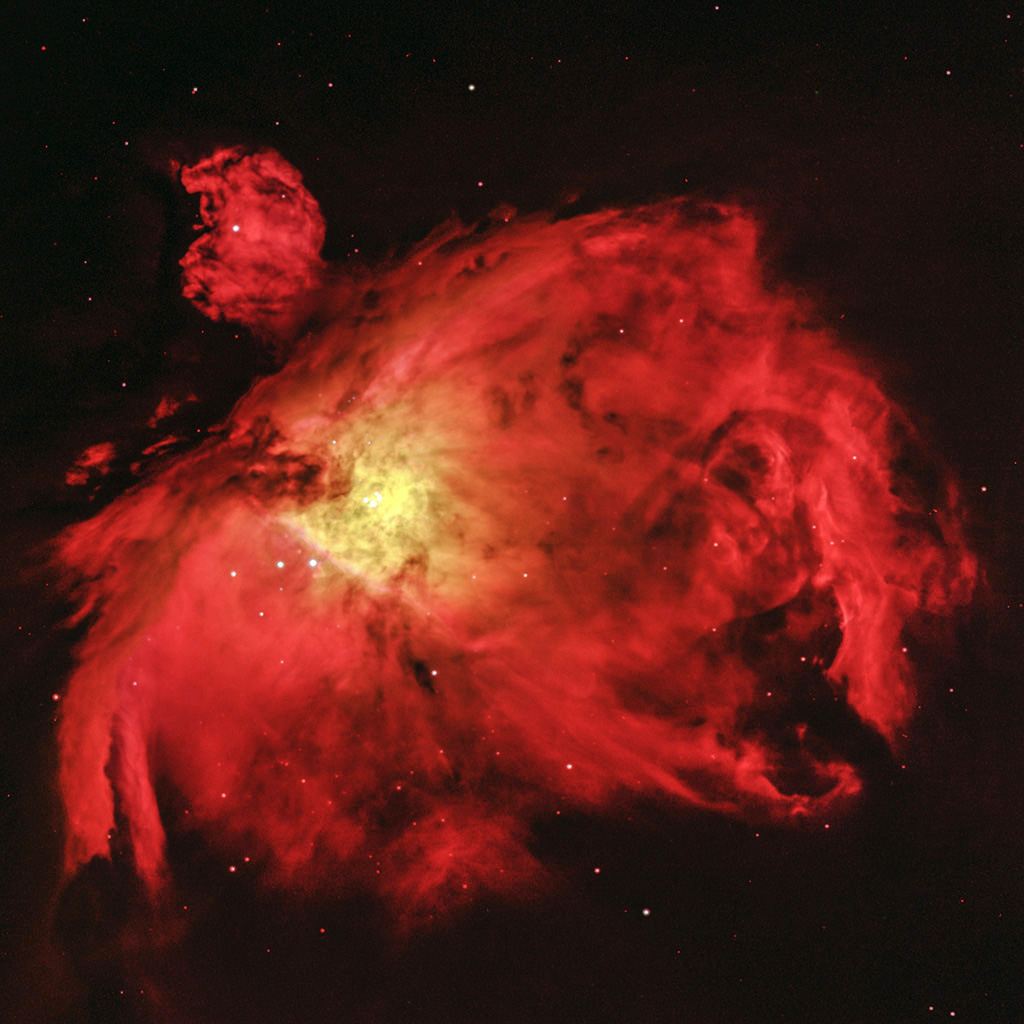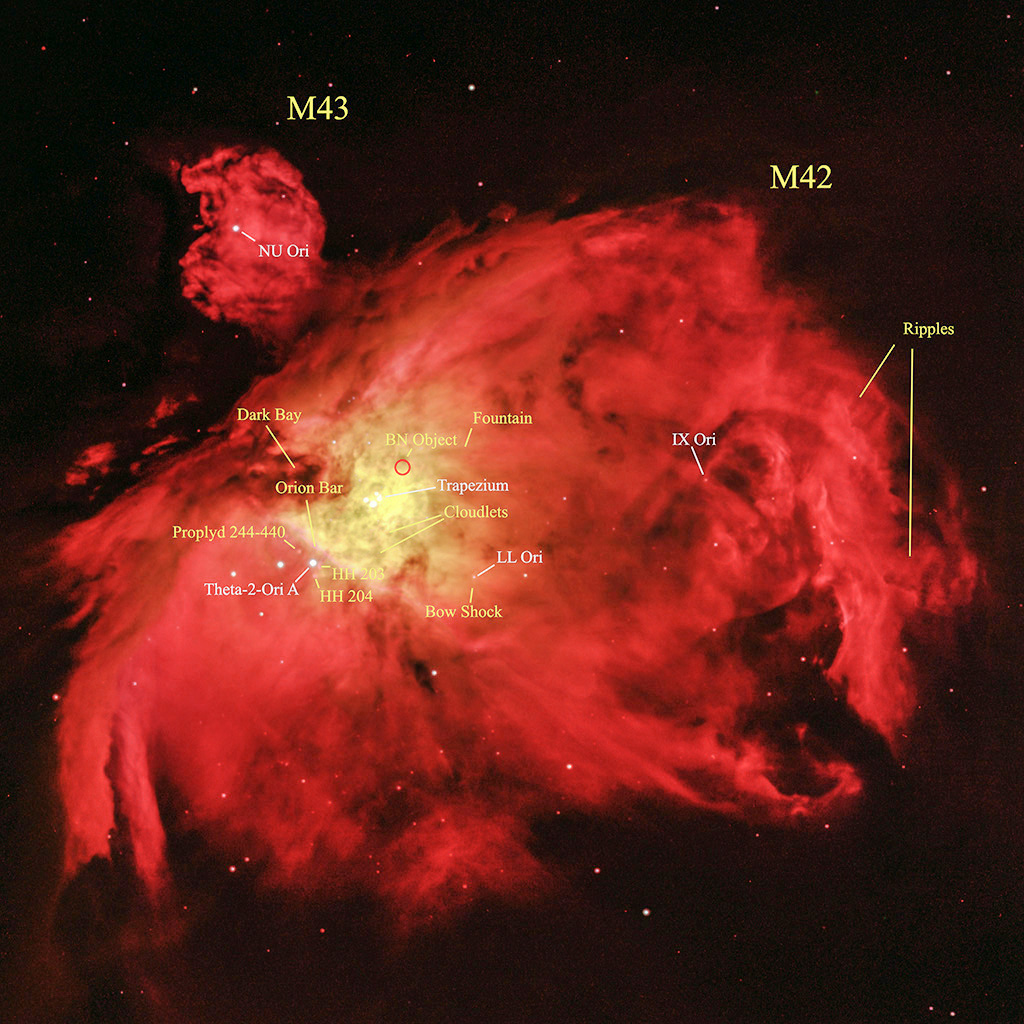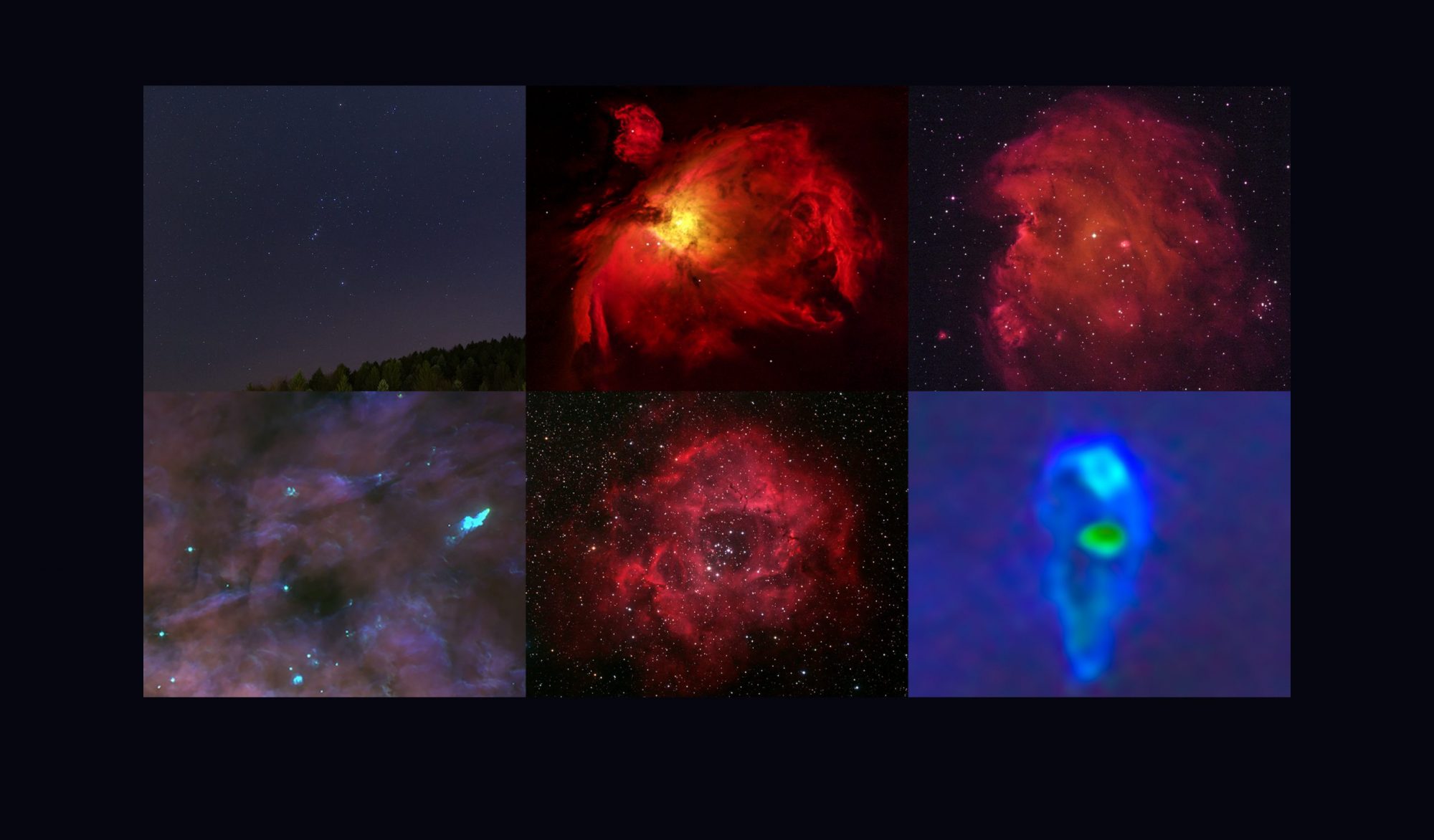

The Orion Nebula in Narrow-band observations (Planewave 17in CDK, FLI Proline 16803). High Dynamic Range, RGB picture of 189 stacked 10 second, 30 second, 60 second and 300 second exposures in Halpha, OIII and SII Narrow-band filters. The total exposure time is three hours.
The Orion Nebula (M42) is the nearest site of ongoing massive star formation and one of the best studied astronomical objects in the Galaxy. The young, luminous O-type stars in the center of the nebula ionize and heat the surrounding gas which forms a bright emission nebula/HII region. In the case of the Orion Nebula this hot gas can even be seen by the naked eye.
Emission nebula like Orion emit most of the visible light in well-defined emission lines. They are therefore ideal targets for Narrow-band observations. In Narrow-band observations special filters are used which only transmit the light of a single spectral line. Pictures made with a Narrow-band filter are black and white pictures. To get a color (RGB) picture, one has to combine three pictures made with different filters. The above color picture was made with three Narrow-band filters for the Halpha (red), OIII (green) and SII (blue) emission lines using a remote telescope (T32) from the iTelescope network in Siding Spring/Australia.
The Halpha hydrogen recombination line is typically the strongest visible spectral line in an emission nebula like Orion and gives it the characteristic red color. Doubly ionized oxygen (OIII) produces another strong emission line in the green/blue spectral range. The center of the Orion Nebula, the Huygens region, shows strong emission in the Halpha and the OIII lines. This results in the yellow color. The line of singly ionized sulfur is less intense but still easily observable with larger amateur instruments. In the resulting color picture a wealth of interesting objects and substructures can be identified.
The center of the Huygens region is formed by the Trapezium stars. This star cluster has six principal components. Most of these massive, young stars have companions. The brightest star in the Trapezium is the O-type star Theta-1-Ori C. In some distance to the Trapezium is another young, ultra-luminous O-type star, Theta-2-Ori A. These two stars mainly shape the structure of the Orion Nebula. Somewhat east of the Huygens region is a young star (LL Ori) with an extended, bow shock like structure. This star is also a member of the Orion star cluster and has a strong stellar wind. This wind is possibly interacting with gas flows originating in the core of the Orion Nebula. The result of this interaction is the observed, extended bow shock like structure. IX Ori is another young star in the Orion cluster and very similar to LL Ori. This object is discussed in more detail in the Orion Cavity section. Separated by a dust band is a second, smaller emission nebula named M43. The B-type star NU Ori is the main energy source in this nebula.
The Dark Bay in front of the Huygens region is formed by neutral gas which is eroded by the intense radiation from the O-type stars inside the Orion Nebula. Inside the Huygens region two rows of small, cloud like structures (cloudlets) can be seen. These objects are most likely formed by neutral foreground gas which is also eroded by the radiation form the Trapezium stars.
Another prominent structure in the emission nebula is the Orion Bar. The Bar is a bright ionization front where the radiation from Theta-1-Ori C destroys the parent molecular cloud and steadily increases the size of the emission nebula. This object is described in more detail in the Orion Bar section. Somewhat south of the Bar are two bright, finger like structures called HH 203 and HH204. These objects are so called Herbig-Haro objects (named after the two astronomers George Herbig and Guillermo Haro). Herbig-Haro objects are bright spots inside star forming regions and can be observed with smaller telescopes. They are typically related with jets or gas ejected from nearby young stars.
Proplyds (for PROtoPLanetarY Disk) are young stars with gaseous disks which are photoevaporated by the intense, energetic radiation from the nearby O-type stars. The largest proplyd in the Orion Nebula is called 244-440. This relatively bright object can be observed with larger amateur instruments. Proplyds are discussed in more detail in the proplyd section.
Somewhat north of the Trapezium is the Becklin-Neugebauer Object (BN Object), the strongest source of infrared radiation in the Orion Nebula. The BN Object is not visible in the picture, but it is related to other, visible astrophysical object inside the Nebula. See the BN Object section for more details. North-east of the Huygens region a fountain like structure can be identified. This object is most likely formed by higher density gas inside the HII region.
At the eastern edge of the Nebula ripple like structures can be identified. The ripples are possibly due to instabilities at the surface of the HII region where ionized gas is flowing over neutral material in the surrounding molecular cloud.
